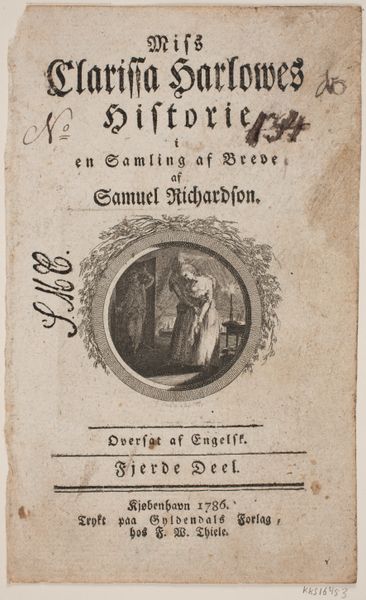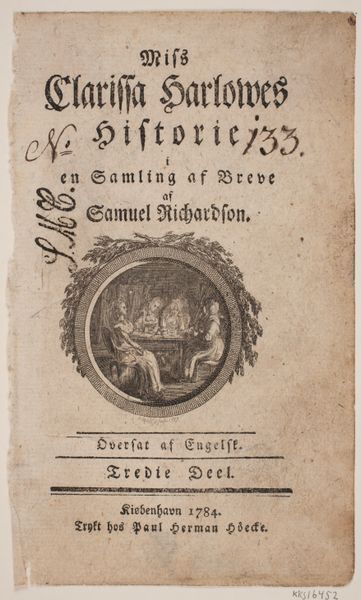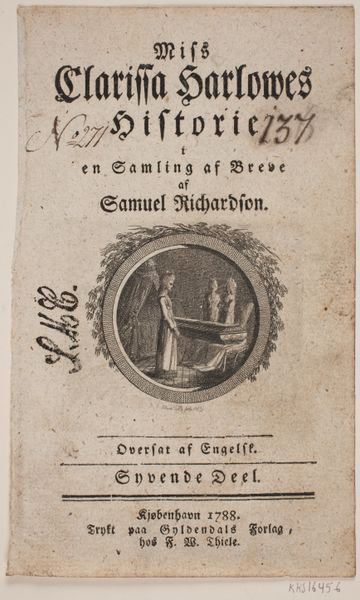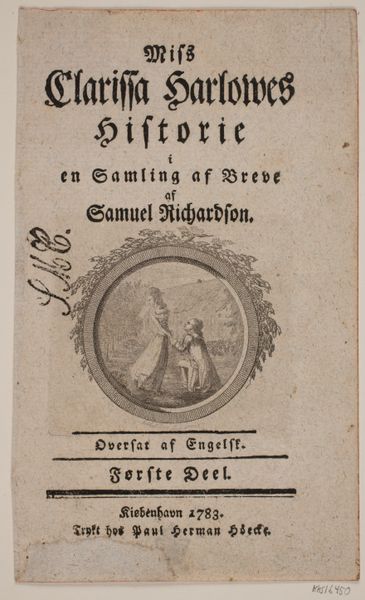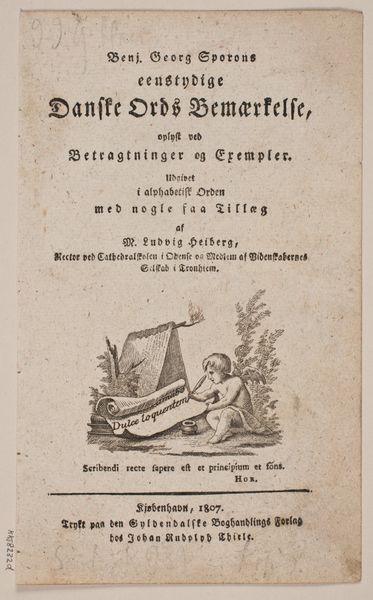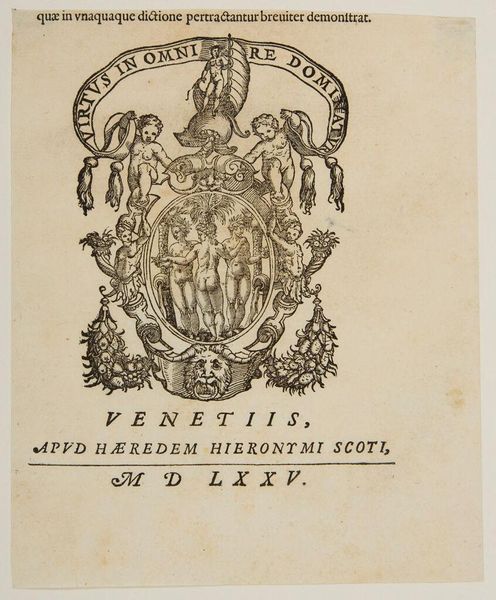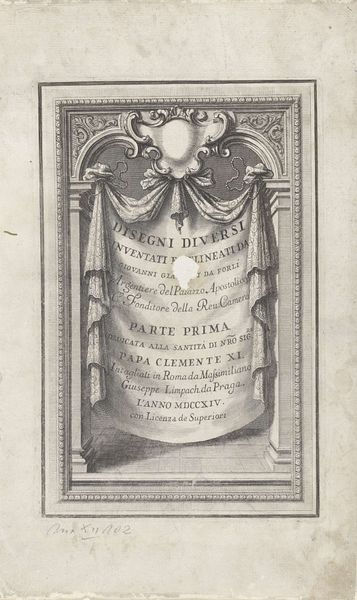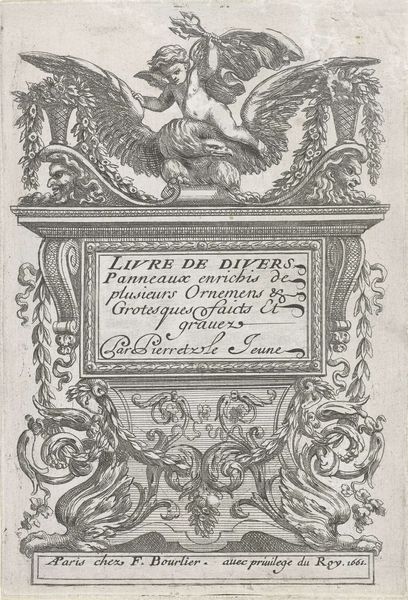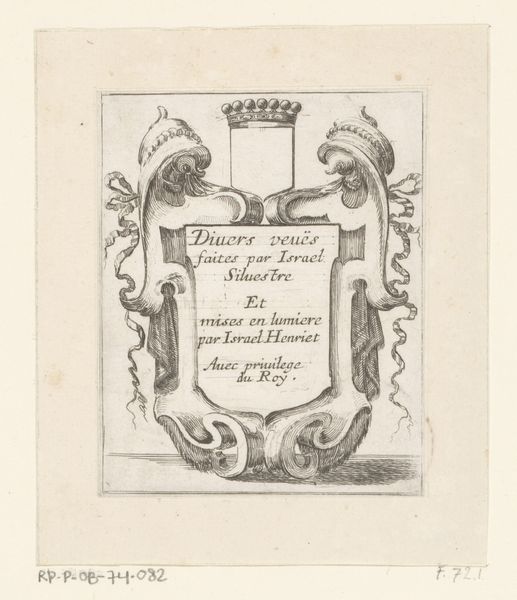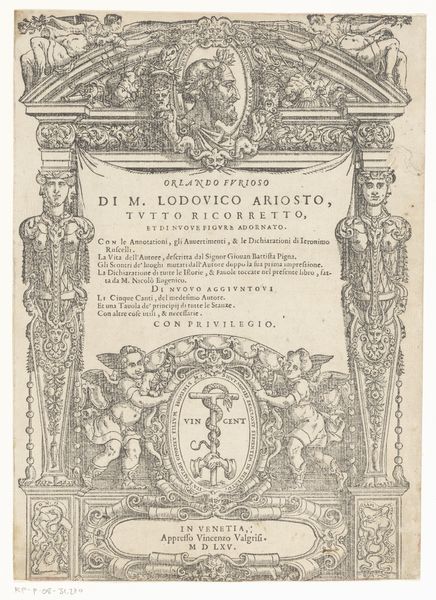
Titelblad med vignet til S. Richardson: "Miss Clarissa Harlowes Historie", femte del 1783
0:00
0:00
Dimensions: 170 mm (height) x 102 mm (width) (bladmaal)
Curator: Look at this fascinating title page from 1783, by Georg Christian Schule. It's an engraving intended for the fifth part of Samuel Richardson's "Miss Clarissa Harlowe's History." Editor: The print has a sort of haunted feel, almost spectral. The central vignette looks like a moment of high drama from a play; the starkness emphasizes the emotional weight of the scene, and its physical production involved meticulously carving lines into a metal plate. What can you tell me about its deeper meanings? Curator: This title page offers a powerful visual encapsulation of the novel's themes. Note the circular vignette showing a woman seated and appearing to be comforted by another, with a man gesturing, perhaps confronting her. The encircling wreath is common for baroque art; it symbolizes eternity but also enclosure, echoing Clarissa's tragic fate. The visual encodes societal pressures and perhaps alludes to moral conflict. Editor: Interesting observation regarding the wreath, framing like that reinforces the theme by drawing attention to constraints imposed by society, morality, or family upon the protagonists. How were these prints produced and disseminated? Considering the printing details on the bottom of the page. Curator: These engravings would have been painstakingly produced. The detail suggests high skill, but the material reality is also vital. Access to such imagery still marked a difference in the socio-economic levels. The use of printed media enabled wider reach for both literature and visuals—democratizing culture to a point. Editor: I hadn't considered the material aspect in that light, especially its impact on 18th-century society. How fascinating to consider its role in expanding access to narratives! Curator: Yes, and the artwork continues to be appreciated through today. Viewing it reminds me how profoundly artworks embody memory, cultural values, and shared human stories. Editor: This exploration emphasizes the importance of contextual analysis to unveil hidden societal factors that enable a deeper understanding. It's an example of understanding the intricate relations between creative ideas, processes, and meaning.
Comments
No comments
Be the first to comment and join the conversation on the ultimate creative platform.
